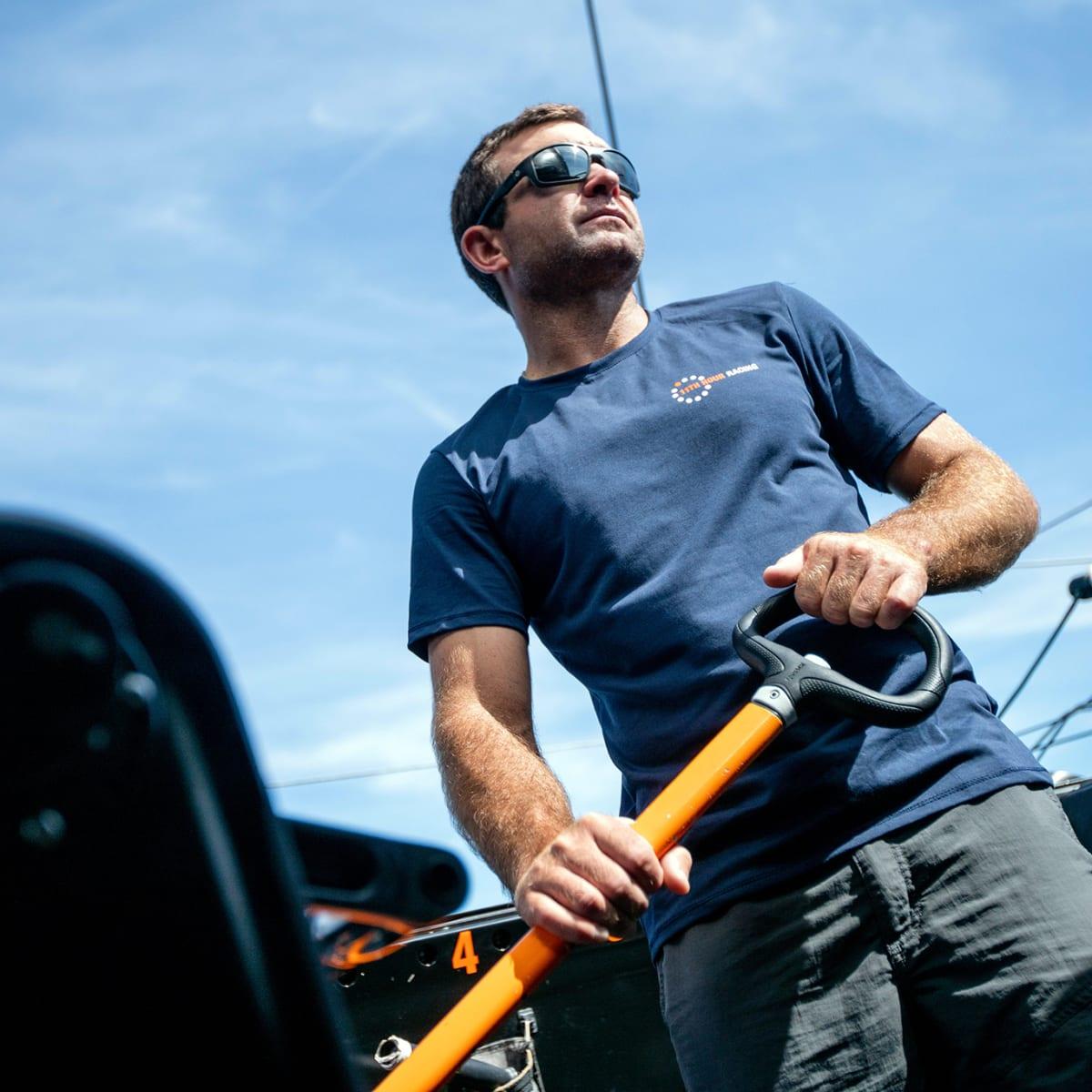On Thursday, Charlie Enright, skipper of the 11th hour racing team, was the keynote speaker in this year’s Charles and Marie Fish lecture.
Enright talked about his team’s recent win at the 2023 Ocean Race, a 37,000 mile competitive sailing event that takes participating teams around the world in six months.
As skipper, Enright acts as the captain, and is responsible for directing the course and speed of the boat.
The race has happened every three to four years since 1973, and Enright has been competing in it for the last 10 years. With the 35-person “11th Hour Racing Team” and a brand new 60-ft. IMOCA 60 offshore racing boat, Enright finally achieved his victory.
However, the mission of the 11th Hour Racing Team stretched farther than just winning the race.
“Our mission is to be a competitive high performance sports team, inspire positive action for ocean health, design new and innovative solutions in the marine industry, and our platform for doing that is the ocean race,” Enright said.
The race consists of eight stops over four continents and starts in January in Alicante, Spain.
The IMOCA boats can reach speeds up to 40 knots, which are nautical miles and the international standard of measuring speed at sea. This means the racing teams can go from Cape Town, South Africa, to Itajaí, Brazil in around 34 days.
This stretch is the longest leg of the race, and covers 13750 miles, going through 18 time zones.
While sailing this leg, Enright and his team passed Point Nemo, the farthest possible point from land that a boat can go.
“At that point, the closest people to us were the people on the International Space Station, who are orbiting 250 miles overhead,” Enright said.
While at Point Nemo, the team decided to send a video to the International Space Station to say hello, and tell the astronauts that they were orbiting right above them.
A few days later, the team got a response.
NASA astronauts Frank Rubio and Steve Bowen sent the crew a back a video of them on the space station, orbiting at a speed of 5 miles per second, or 17,500 miles per hour.
After this leg of the race, the team was in Brazil and falling behind their competitors.
“When we got to Brazil, it was pretty clear that our team had been underperforming,” Enright said. “We were in our competitive 11th hour, and it was time to turn it around.”
The team successfully turned the competition around, and won the leg of the race coming into Newport, Rhode Island. They then went on to win the fifth and sixth legs, placing themselves two points above the competition.
On their way into Genoa, Italy, their vessel tragically got hit by another boat.
At this point in the lecture, Enright shows a video detailing the experience and showing audience members how the other boat hit the side of his crew’s yacht.
“You think you have a good team of people around you, but you don’t know you do until you’re up against something like this,” Enright said.
The damage to the boat meant that the 11th hour racing team was unable to complete the last leg into Genoa, which was all they needed to do to win.
Since there was extensive damage to the boat, normal procedure is to award average points to each team. Once the points were awarded, Enright and his team won the race.
The Ocean Race competition is the platform that the 11th hour racing team uses to spread its message on ocean health, and winning allows them to widely spread their message.
To achieve their mission, the crew started with the boat. According to Enright, this is the first boat he had sailed in the ocean race that he and his team had control over designing.
The boat included 220 pounds of carbon fiber, a good portion of which was recycled. They also used bamboo, flax and bioresin to make the boat more sustainable. There was 100% renewable energy on deck, solar panels and a hydro generator to get energy. They also collected data from the farthest reaching parts of the ocean. Using an Ocean Pak system, the crew was able to test for the presence of dissolved CO2, salinity and sea surface temperature.
All measurements went to climatologists and meteorologists to further their studies of the ocean and climate change.
“At the end of the day, we really are more than a sailing team,” Enright said.
The 11th hour racing team wasn’t the only Ocean Race team to collect data for science.
Victoria Fulfer, PhD candidate at URI worked with the National Oceanography Center in Southampton, England to analyze microplastic data sent by two other racing teams.
Team Holcim of Switzerland and team GUYOT, the European team, both filtered water in their boats to collect microplastic samples.
Fulfer presented slides with pictures of the ocean currents to show how pollution moves through the water.
“The ocean is constantly changing and very dynamic, which makes understanding how plastic moves through the ocean very difficult,” Fulfer said.
The teams of the Ocean Race support science by getting samples from places that other vessels may never go.
“The important thing is the work that the ocean race is doing is filling in crucial data gaps,” Fulfer said. “Thanks to the Ocean Race, we can really understand how vast the problem of ocean microplastics is, and bring awareness to the issue to start thinking about solutions.”





